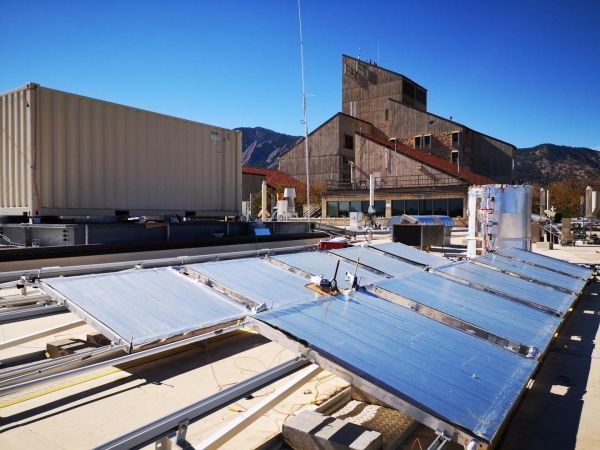CU Boulder and University of Wyoming engineers have successfully scaled up an innovative water-cooling system capable of providing continuous day-and-night radiative cooling for structures. The advance could increase the efficiency of power generation plants in summer and lead to more efficient, environmentally-friendly temperature control for homes, businesses, utilities and industries.
The new research demonstrates how the low-cost hybrid organic-inorganic radiative cooling metamaterial, which debuted in 2017, can be scaled into a roughly 140-square-foot array—small enough to fit on most rooftops—and act as a kind of natural air conditioner with almost no consumption of electricity.
“You could place these panels on the roof of a single-family home and satisfy its cooling requirements,” said Dongliang Zhao, lead author of the study and a postdoctoral researcher in CU Boulder’s Department of Mechanical Engineering.
The technology, which takes advantage of natural radiative cooling principles, is described today in the journal Joule.
Read more at University of Colorado at Boulder
Image: An array of RadiCold cooling modules on the roof of a building on the University of Colorado Boulder campus. (Credit: Yang Lab / University of Colorado Boulder)


